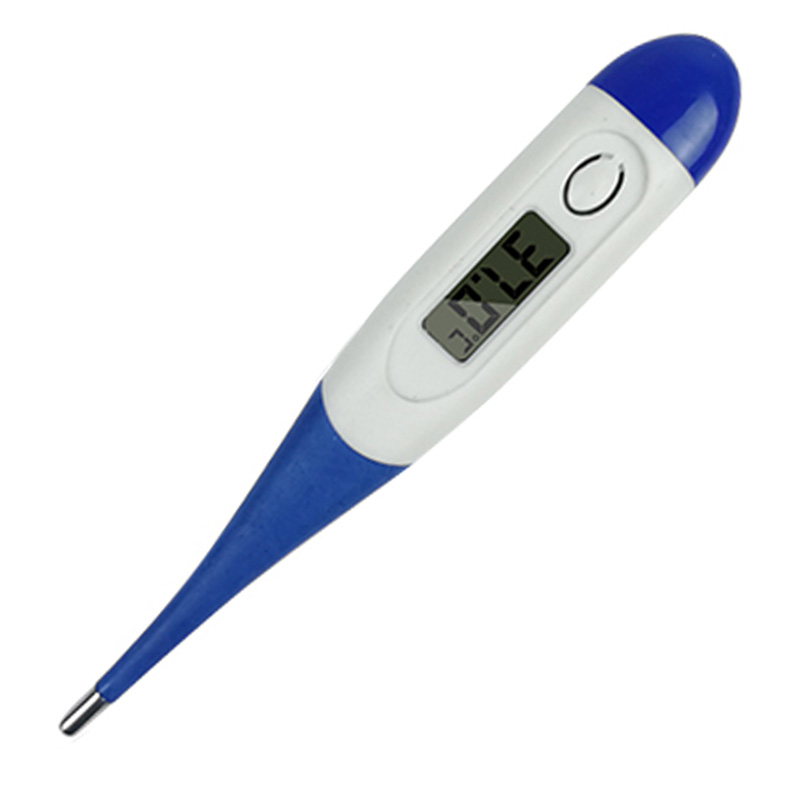Introduction: Importance of Accurate Temperature Measurement
Temperature measurement is a fundamental aspect of diagnostic and preventive healthcare. For centuries, thermometers have played a vital role in identifying and managing various medical conditions. The introduction of digital infrared thermometers has marked a significant advancement in this field, providing a modern alternative to traditional thermometers. This article explores the differences, advantages, and limitations of digital infrared thermometers and traditional thermometers, highlighting their applications in healthcare settings.
Traditional Thermometers: Overview and Types
● Mercury Thermometers: History and Usage
Mercury thermometers, once ubiquitous in medicine cabinets worldwide, have a long-standing history in temperature measurement. These devices work on the principle of mercury expansion within a glass tube to indicate temperature. However, due to their potential health risks, such as mercury toxicity in the event of breakage, their use has significantly declined.
● Electronic Contact Thermometers: Types and Benefits
Electronic contact thermometers represent an evolution in traditional thermometry. Utilizing electronic heat sensors, these devices provide digital temperature readings with improved accuracy and speed. Available in various forms such as oral, rectal, and axillary (armpit) thermometers, electronic contact devices are appreciated for their versatility and reliability, particularly in home and clinical settings.
Digital Infrared Thermometers: Modern Innovation
● How Digital Infrared Technology Works
Digital infrared thermometers represent a technological breakthrough in non-contact temperature measurement. By detecting infrared energy emitted from the body, these devices provide rapid and accurate readings without the need for physical contact. The innovation has revolutionized temperature measurement, particularly during the COVID-19 pandemic, offering a hygienic solution for mass screenings.
● Types of Digital Infrared Thermometers
Digital infrared thermometers come in various forms, including forehead (temporal artery) thermometers and ear (tympanic) thermometers. Each type has its specific applications and benefits. Temporal artery thermometers, for example, are ideal for quick screenings, while tympanic thermometers provide precise readings suitable for clinical environments.
Accuracy and Reliability: Digital vs. Traditional
● Factors Affecting Thermometer Accuracy
Accuracy and reliability are critical considerations in thermometer selection. Traditional thermometers, when used correctly, offer precise readings. However, factors such as environmental temperature and user technique can affect their accuracy. Digital infrared thermometers provide consistent readings when used according to manufacturer guidelines, although external factors like ambient light and perspiration may influence results.
● Comparing the Precision of Different Types
While traditional thermometers have long been considered the standard for accuracy, modern digital infrared thermometers have shown comparable precision in many settings. Research indicates that with proper usage, the precision of digital infrared thermometers nearly matches that of traditional methods, offering a viable alternative in clinical and home environments.
Ease of Use: Convenience in Measurement
● User-Friendliness of Digital Thermometers
Digital infrared thermometers are celebrated for their user-friendly design. Their non-contact nature not only promotes hygiene but also simplifies the temperature-taking process, especially in children and uncooperative patients. With features like instant readings and easy-to-read displays, digital devices enhance the user experience.
● Challenges with Traditional Thermometer Use
Traditional thermometers, while reliable, present certain usage challenges. For instance, maintaining contact for the required duration can be difficult, especially with restless children. Oral and rectal thermometers require precision and patience for accurate readings, which can be a hindrance in high-pressure healthcare settings.
Safety Concerns: Traditional vs. Digital
● Risks Associated with Mercury Thermometers
The primary safety concern with traditional mercury thermometers is the risk of mercury exposure if they break. Mercury is toxic, and exposure poses significant health risks, prompting regulatory bodies to recommend alternative thermometry solutions.
● Safety Features of Digital Infrared Models
Digital infrared thermometers eliminate the risk of mercury exposure, offering a safer option for temperature measurement. They are designed with advanced safety features, such as automatic shut-off and durable materials, reducing the risk of contamination and prolonging device longevity.
Cost and Accessibility: Economic Considerations
● Cost Comparison Between Traditional and Digital
Cost is a crucial factor in thermometer selection. Traditional thermometers are generally more affordable upfront. However, digital infrared thermometers, while initially costlier, offer long-term savings due to their durability and minimal maintenance requirements. Additionally, they present economic benefits in settings requiring frequent temperature assessments.
● Availability and Accessibility in Various Settings
Digital infrared thermometers have become increasingly accessible, with options available for home use, wholesale, and bulk purchasing. Suppliers, manufacturers, and factories worldwide offer custom, OEM, and ODM digital infrared thermometers, catering to diverse consumer needs and preferences.
Application in Different Age Groups
● Thermometer Suitability for Infants, Children, Adults
Choosing the right thermometer involves considering the user's age. For infants and young children, the safety and comfort of digital infrared thermometers make them an attractive option. Older children and adults can benefit from the precision of both digital and traditional methods, depending on the situation.
● Specific Needs and Preferences in Temperature Monitoring
Different age groups have specific temperature monitoring needs. Infants and toddlers require gentle, non-invasive methods, while adults may prioritize accuracy and speed. Digital infrared thermometers address these varied needs, offering tailored solutions for every age group.
Technological Advancements and Future Trends
● Innovations in Digital Thermometer Technology
The field of thermometer technology continues to evolve, with innovations enhancing the functionality and accuracy of digital infrared thermometers. Advances such as Bluetooth connectivity and integration with health apps represent the future of temperature monitoring, offering users enhanced control over their health data.
● Predictions for Future Thermometer Developments
Looking forward, the future of thermometry promises further technological advancements, with ongoing research focusing on increasing accuracy, reducing costs, and expanding applications. Digital infrared thermometers are poised to play a pivotal role in this evolution, driven by continuous innovation and consumer demand.
Conclusion: Choosing the Right Thermometer for Your Needs
The decision between a digital infrared thermometer and a traditional thermometer ultimately depends on individual needs, preferences, and circumstances. Both types offer distinct advantages and face specific limitations. Whether one opts for the traditional reliability of electronic contact thermometers or the modern convenience of digital infrared thermometers, understanding these aspects is crucial for making an informed choice.
Leis is a leading and fast-growing medical supplier dedicated to the research, design, develop, manufacture, and marketing of medical devices. With a team committed to providing high-quality products and excellent service, Leis builds long-term partnerships with customers. Their product line includes home-care medical instruments and diagnostic equipment, addressing various healthcare needs. Leis aims for continuous improvement and customer satisfaction, delivering premium medical instruments globally.

